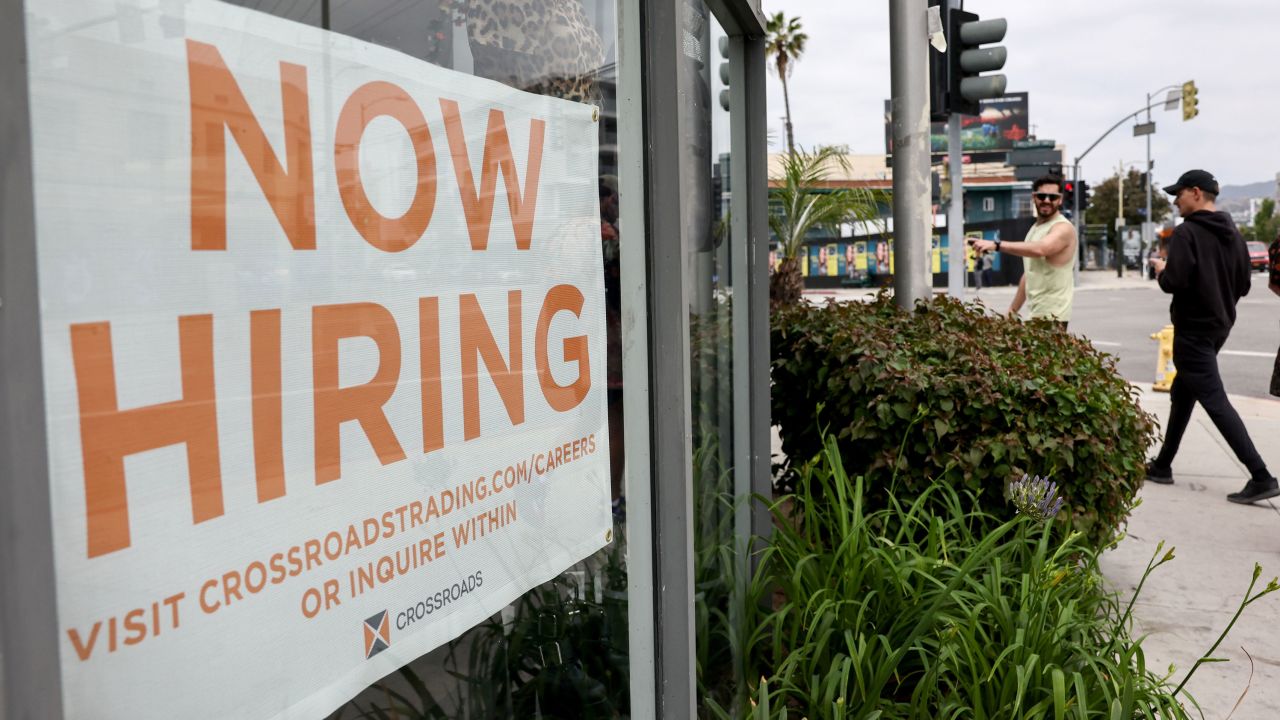US job openings fall below 9 million for the first time since March 2021 By Alicia Wallace, CNN
The number of available jobs in the United States shrank for the third consecutive month, dropping below 9 million for the first time since early 2021, according to the latest data released Tuesday by the Bureau of Labor Statistics.
In addition, a smaller number of workers quit their jobs, businesses hired fewer workers and layoffs nudged higher as the US job market settles into a calmer, more balanced state.
Job openings fell to a seasonally adjusted 8.827 million in July, from 9.165 million in June, according to the BLS’ Job Openings and Labor Turnover Survey report. It’s the lowest number of total openings since March 2021, and there are now 1.5 available jobs for every unemployed person.
“This is where we wanted to go; we’ve got job openings heading downward, but in a calm, cool and collected manner,” Rachel Sederberg, senior economist with labor market research and analytics firm Lightcast, told CNN.
Economists expected openings would drop to 9.465 million, according to Refinitiv consensus estimates.
No widespread layoffs
Openings decreased across most major industries, but picked up in areas such as information and transportation, warehousing and utilities.
The July JOLTS data showed that the number of new hires dropped to 5.773 million from 5.94 million, quits landed near pre-pandemic totals by falling to 3.549 million from 3.802 million, and layoffs inched up to 1.555 million from 1.551 million.

A ‘Now Hiring’ sign is displayed outside a resale clothing shop on June 2, 2023, in Los Angeles, California. Mario Tama/Getty Images
Layoffs essentially remaining unchanged shows that there was little contagion from all those large job cuts in technology and media late last year and into the early part of this year, Sederberg said.
“The fear of tech and media layoffs continuing is not necessary anymore,” she said. “And even in those groups, amongst tech especially, we’re seeing rehiring after companies adjusted to what their normal is now after the pandemic.”
A new normal
However, it still remains a workers’ labor market: Layoffs and discharges are 17% below what they were before the pandemic, the “labor leverage ratio” of quits versus discharges is 29% higher, and there are 3 million more openings than there are unemployed workers, said Julia Pollak, chief economist with online job site ZipRecruiter, in a statement.
“Both declines [in openings and quits] point to cooling labor market conditions, which will come as a relief to many employers, but bring back many of the old challenges that have characterized job search for decades,” she said.
While the labor turnover activity is cooling down from a highly spirited two-year stretch, they remain in uncharted — if not entirely new — territory, Sederberg said.
“We had Covid hit; we’ve also had the Baby Boomers head into retirement in large, large numbers; and we’ve had a decrease in immigration at the same time,” she said. “So what that’s going to look like going forward, and what is normal, is going to be very different from what we called normal in the 1990s, the 2000s, and even in the 2010s, just before the pandemic.”
More to come
For now, however, it appears that the jobs market and the broader economy are still edging toward a “soft landing,” when inflation is reined in without triggering mass layoffs and a recession, she said.
Separately on Tuesday, a closely watched measure of consumer confidence fell for August, supplementing a separate consumer sentiment measure last week that showed caution is growing among Americans.
However, the biggest data points will be landing later this week: The Commerce Department’s report on Personal Consumption Expenditures, the Fed’s preferred inflation and consumer spending gauge, will be released Thursday; and the August jobs report will land Friday morning.





